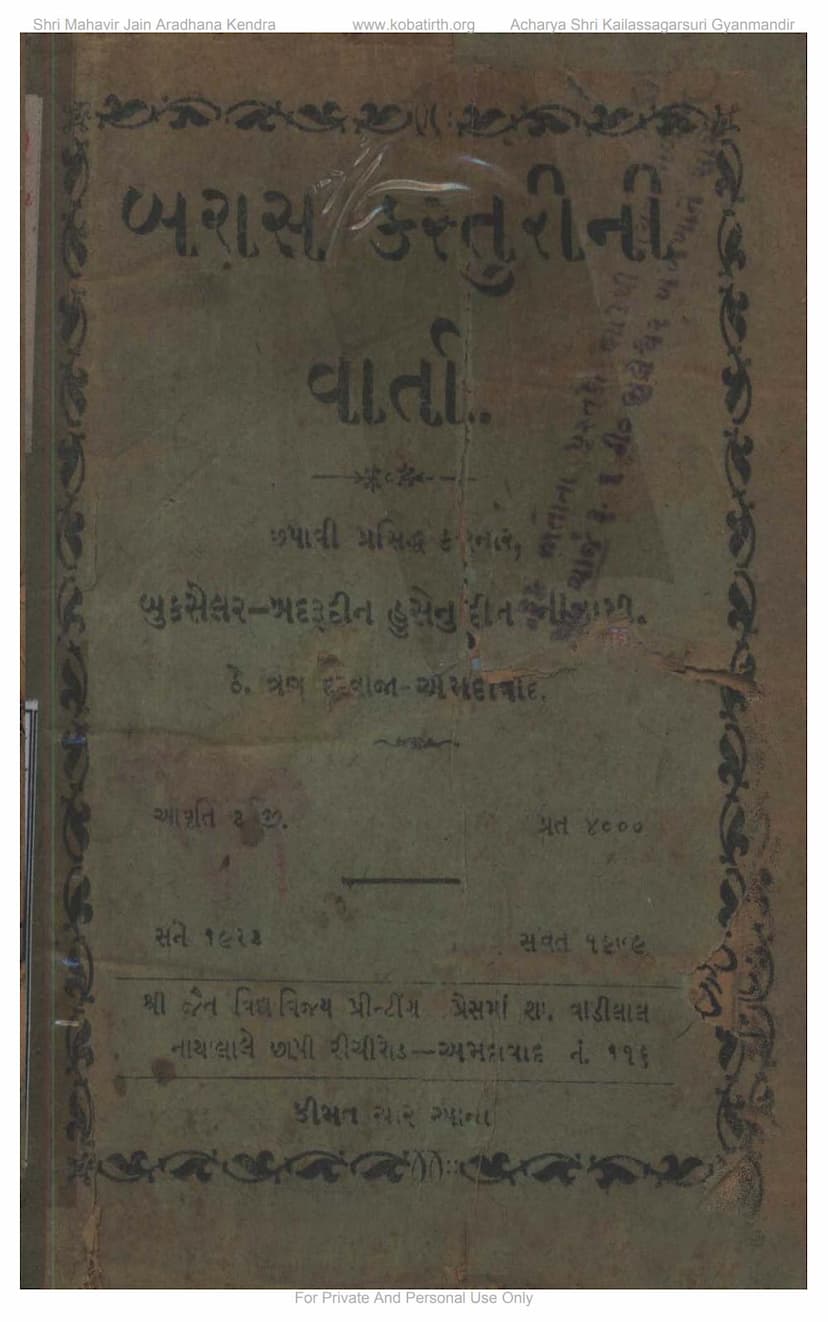Baras Kasturini Varta
Added to library: September 1, 2025

Summary
This is a summary of the Jain text "Baras Kasturini Varta" (The Tale of Baras Kasturi) by Badruddin Husain.
The story begins with King Mitrasen of Keshambi, who, despite ruling a prosperous and just kingdom, is deeply saddened by his childlessness. He and his queen, Prabhavati, try various remedies, including consulting learned scholars and performing rituals, but to no avail.
In a forest, King Mitrasen encounters an Apsara (celestial nymph) who curses him. This curse later affects his pregnant queen. The queen, experiencing unusual cravings, asks the king to fill a well with blood, which he does by using a mixture that resembles blood. During her bath in this well, a Garuda (divine eagle) mistakes her form in the colored water for prey and carries her away.
Meanwhile, the story shifts to a young boy named Baras who lives with his mother in the forest. One day, while playing, he accidentally injures a meditating ascetic with his slingshot. The ascetic, in anger, curses Baras, stating that if he ever engages in sexual union, he will die.
Baras grows up to be a skilled and virtuous prince. He befriends a minister's son. While hunting, Baras is drawn to a beautiful maiden named Kasturavati. He learns that she has a unique past: she was cursed by a sage and could only marry someone who could solve a riddle or overcome a specific challenge. Baras, intrigued, vows to win her.
The narrative then describes Baras's adventures to find Kasturavati and overcome the challenges set before him. These challenges often involve tests of wit, courage, and compassion. He encounters various mystical beings, solves riddles, and demonstrates his strength and virtue.
The story also weaves in elements of past lives and karmic consequences. It highlights the importance of righteousness, truthfulness, and devotion in the Jain faith. The tale emphasizes that even seemingly insurmountable obstacles can be overcome with inner strength and divine grace.
The climax involves Baras and Kasturavati reuniting and facing their destiny. Their union signifies the fulfillment of past prophecies and the triumph of virtue over adversity. The story concludes with their happy married life, illustrating the rewards of adhering to dharma.
The text also includes philosophical discussions on karma, rebirth, and the nature of existence, common themes in Jain literature. It serves as a moralistic narrative, guiding readers towards righteous conduct and spiritual understanding.